Possession In Arabic: How To Form A Possessive Noun in Arabic?
Advertisements
Possession is an important concept in Arabic grammar, as it is in any language. In Arabic, possession is expressed through the use of possessive pronouns and possessive suffixes.
In addition, Arabic uses the إضافة idhafa or the ‘genitive construct to show possession. In this lesson, we will learn possession in Arabic as well as how to form a possesive in Arabic.
How Do You Show Possession In Arabic
Arabic uses the إضافة idaafa to show possession. The idaafa literally means addition, attachment, or annexation. It means adding one noun to another to form a relationship of possession or belonging (one noun being owned or belonging to the other noun).
There are two parts of idaafa: The first part of is called mudaaf (مُضَافٌ) while the second part is called mudaaf ilayhi (مُضَافٌ إِلَيْهِ).
The meaning of mudaaf (مُضَافٌ) is possessed or possession while he meaning of mudaaf ilaihi (مُضَافٌ إِلَيْهِ) is possessor.
Advertisements
The two main ways of describing possession in English is by either using the word “of” or the possessive “s”, for example, “the teacher’s office” or “the office of the teacher”.
The most common way of describing possession in Arabic is closer to the second example in that the word for “office” would come first followed by the word for “teacher” (مَكتَب المُدَرِّس).
Arabic also use possesive pronouns to show possession. Possessive pronouns are suffixes that are used to indicate possession.
For example, the suffix “i” (ي) means “my,” and the suffix “ka and ki” (ك) means “your (singular, male and female respectively).”
There are different possessive pronouns for different combinations of gender and number.
Advertisements
It’s also worth noting that possession in Arabic is often expressed in a way that might be unfamiliar to speakers of English. For example, in English, we might say “my car” to indicate that the car belongs to me.
In Arabic, however, we would say “the car of me” (sayyarat-i), with the possessive suffix “-i” added to the end of the noun “sayarat” (car).
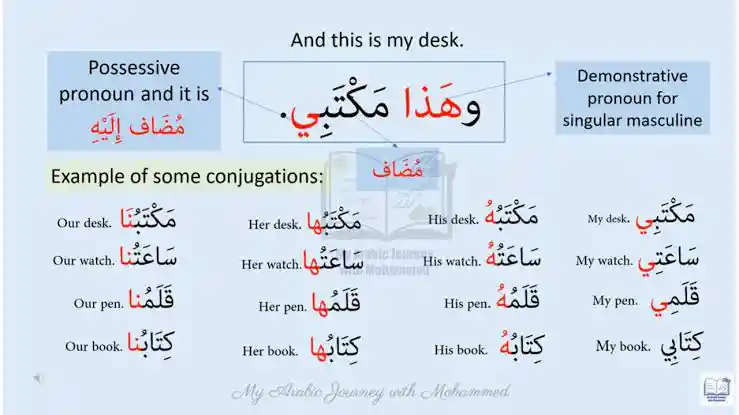
Learn more about possesive pronouns here.
How To Form A Possessive Noun in Arabic?
In Arabic, the possessed noun comes before the possessor, example: كِتَابُ الْمُدَرِّسِ so it would literally read “Book teacher’s” but it means the teacher’s book.
Let us analyze an example below and we explain how the rules are applied:
Kitaabul mudarris كِتَابُ الْمُدَرِّسِ
The first part is the possessed noun (called Mudaf – مُضَافٌ). The rules of the possessed noun are:
Although /kitab/ is not definite – in other words, ‘al’ (the) – does not come before the noun, it is implied. Hence this means ‘the book’ and not ‘a book’ even though ‘al’ is not written before kitab.
The possessed noun can be in any case (genitive with kasrah, accusative with fatah, or nominative with dammah).
In normal cases it is nominative so it ends with a dammah but if preceded by a preposition it takes the genitive case so it ends with a kasrah.
Since the possessed noun is definite therefore it cannot take tanwn i.e., it cannot take double dammah.
The second part is the possessor (called Mudaf Ilaihi –مُضَافٌ إِلَيْهِ). It is Al Mudarrasi (the teacher) in the example. The possessor can be either:
Definite or indefinite (e.g. Al-mudarrisi or mudarrisin – the teacher or a teacher). The possessor is always in genitive case (therefore the last letter originally takes a kasrah or kasratain).
Here is list of examples of possession in Arabic language.
| Possessed noun | Possessor | Meaning |
| مَكتَبَةُ | المَدرَسَةِ | The school library |
| بَيت | المُدير | The manager’s house |
| قَلَمُ | مُحَمَّدٍ | Muhammad’s pen |
| كِتَابُ | الطَّالِبِ | The book of the students. |
| مَكْتَب | الْمُدَرِّسِ | Teacher’s desk |
| بَابُ | الْبَيْتِ | The house’s door |
| كِتَابُ | حَامِدٍ | Hamid’s book |
| حَقِيْبَةُ | الْمُدَرِّسِ | The teacher’s bag |
| قَلَمُ | الْمُدَرِّسِ | The teacher’s pen. |
Study the photos below to learn more about Arabic possession.

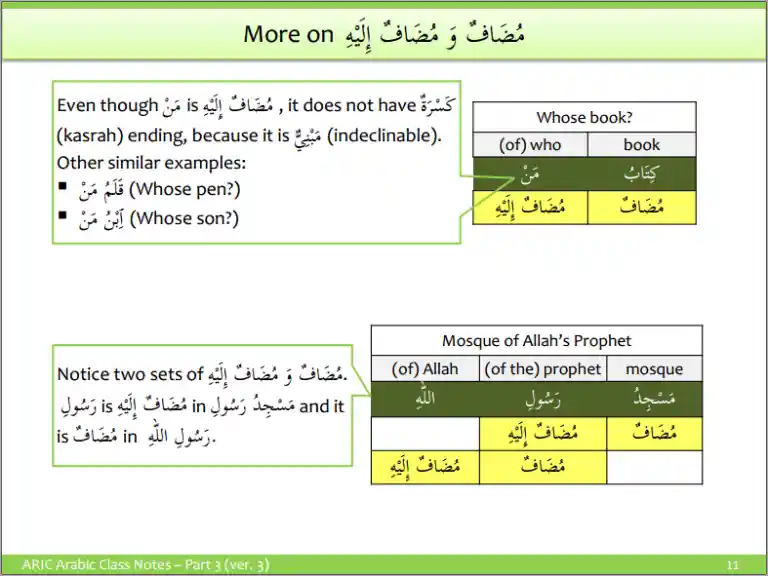
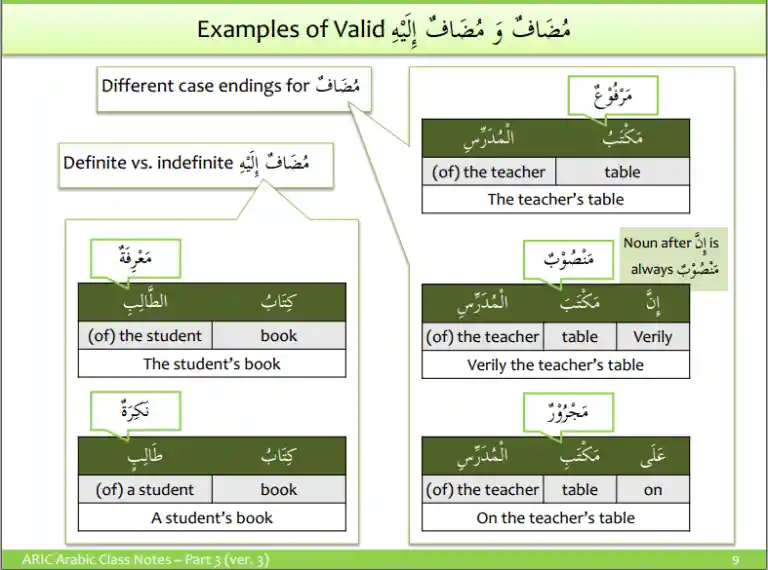
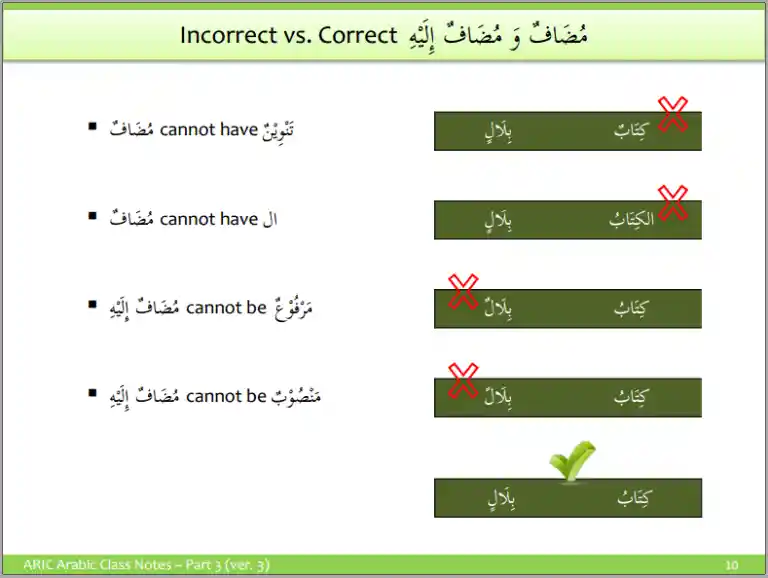
In conclusion, possession in Arabic is expressed through the use of possessive pronouns and possessive suffixes, which are added to the end of nouns. While this can be a bit challenging for learners to master at first, with practice, it becomes easier over time.
Advertisements

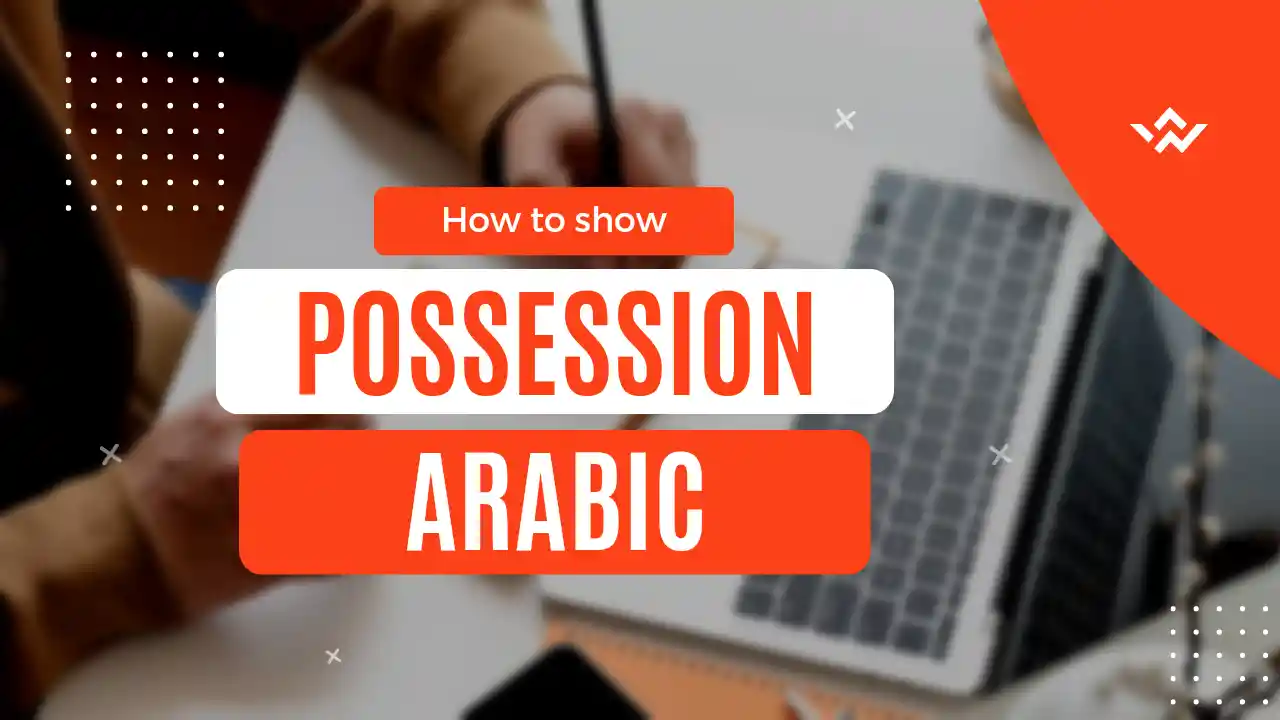
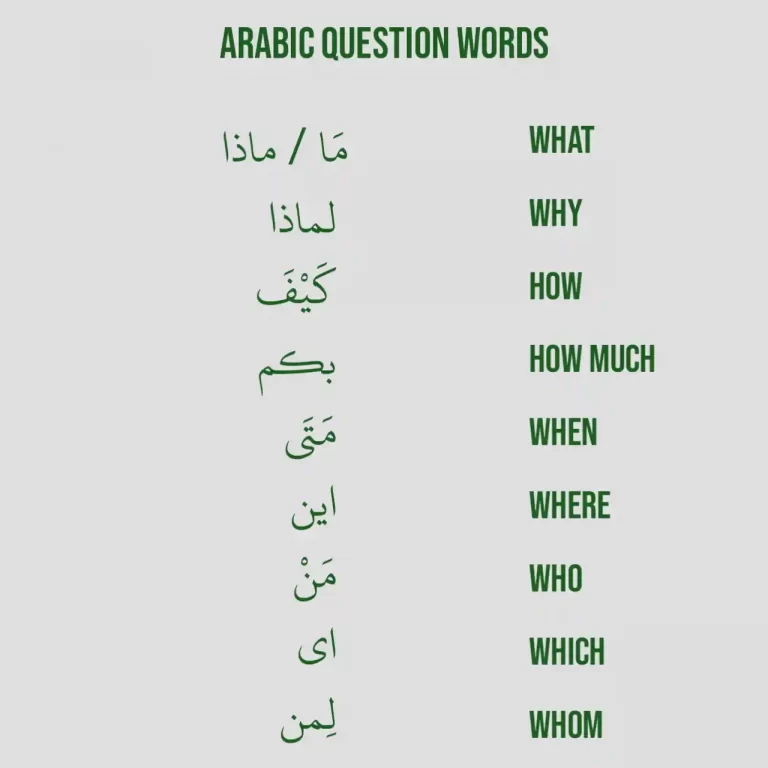

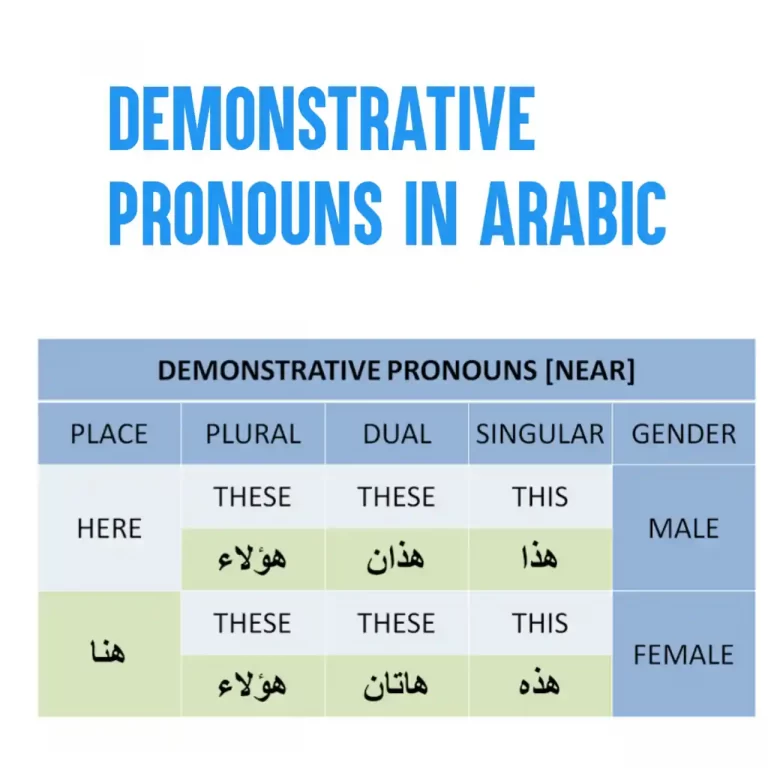
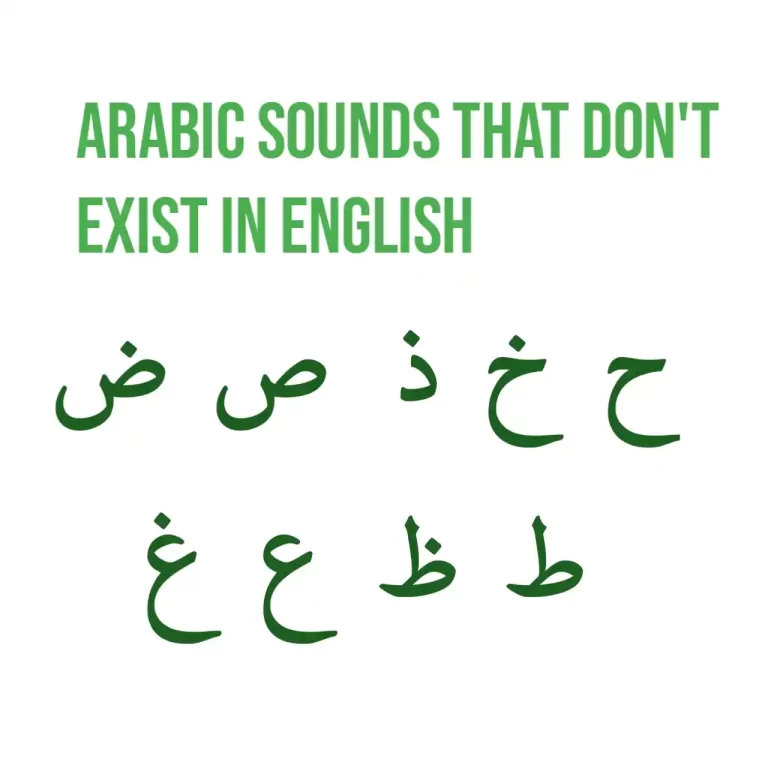
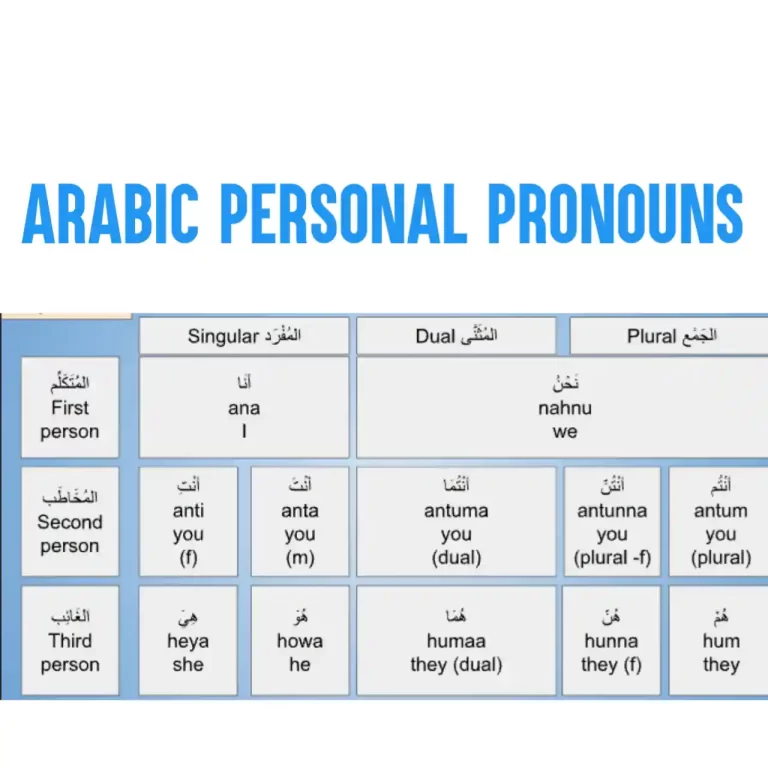
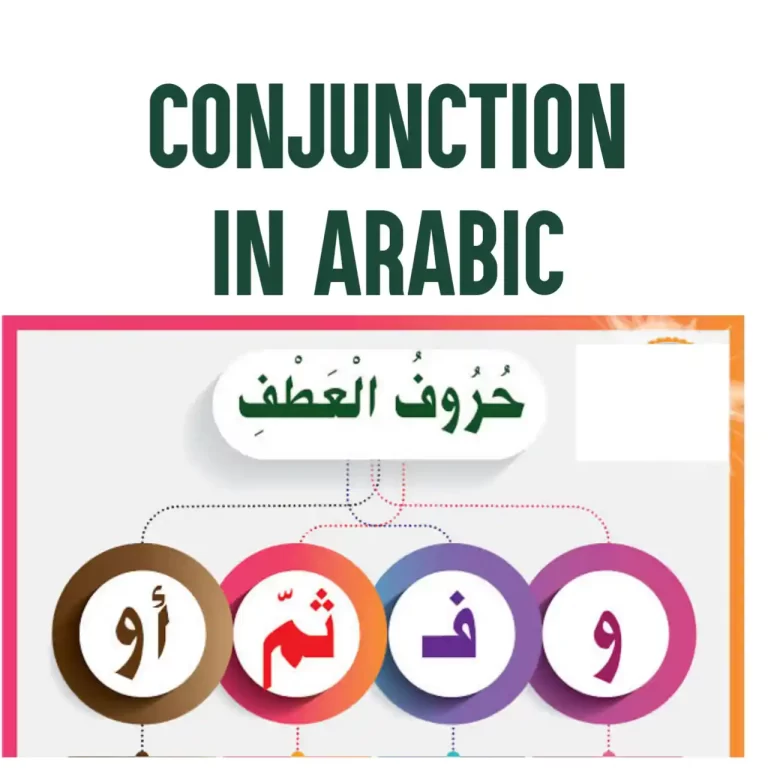
One Comment